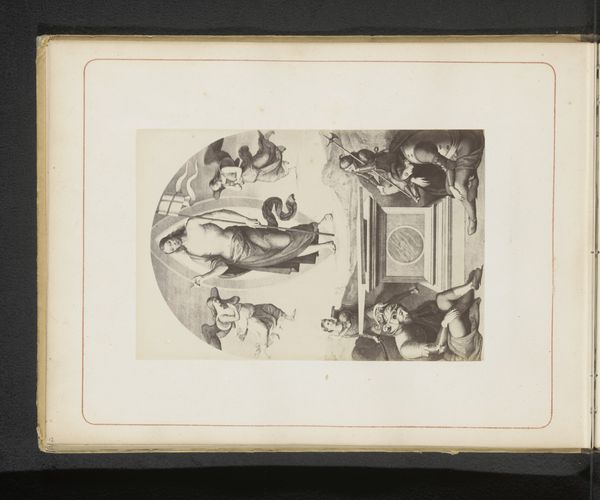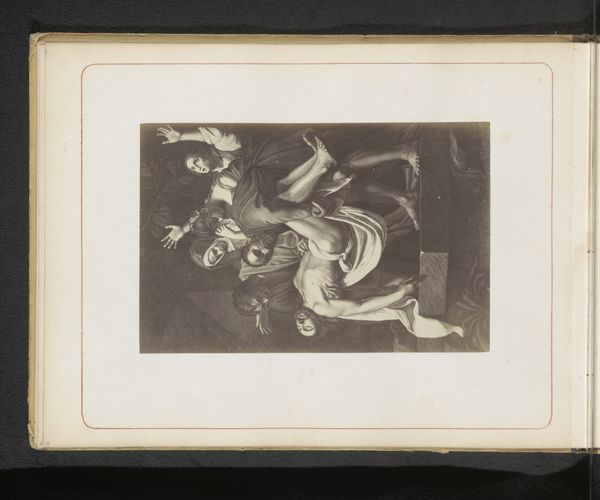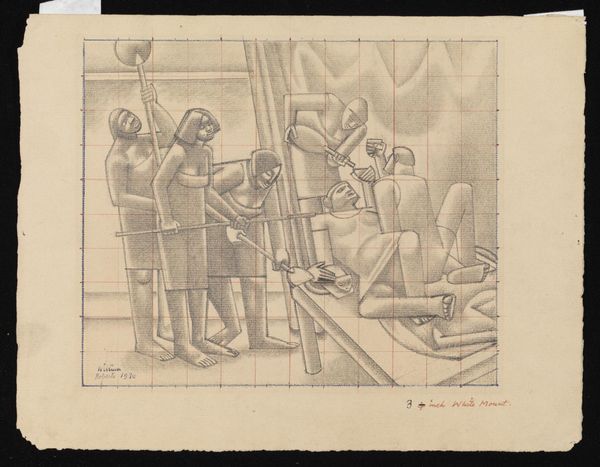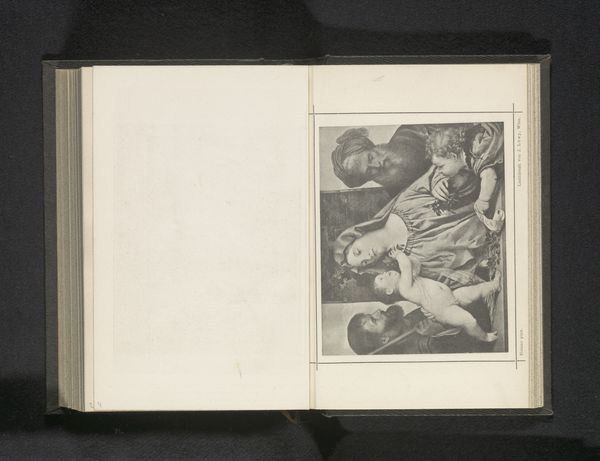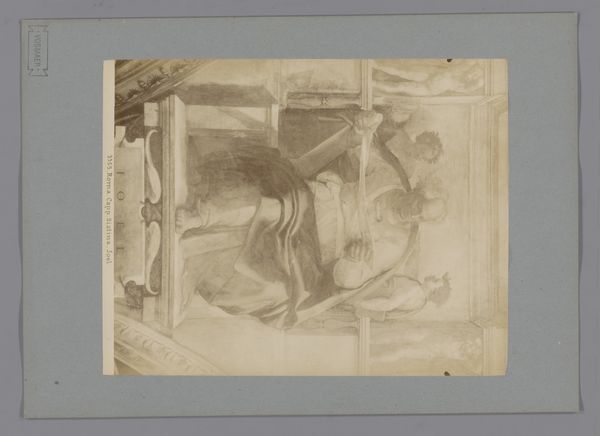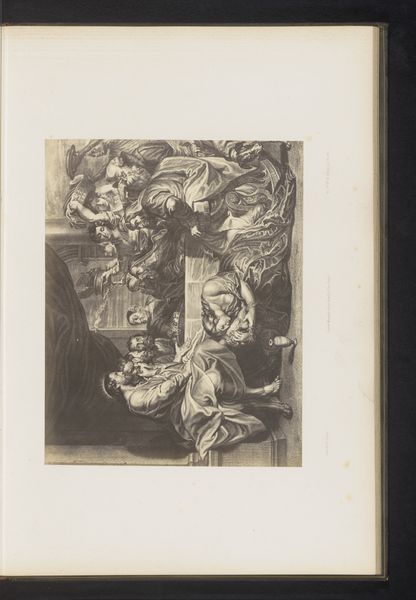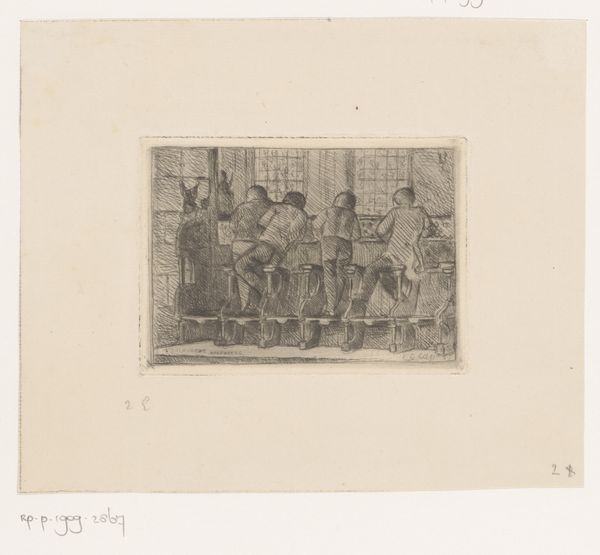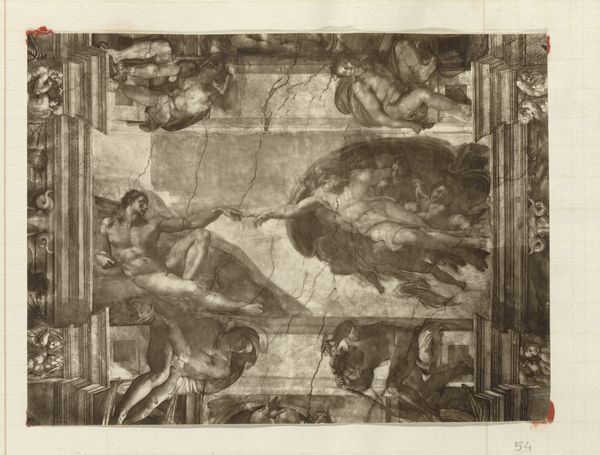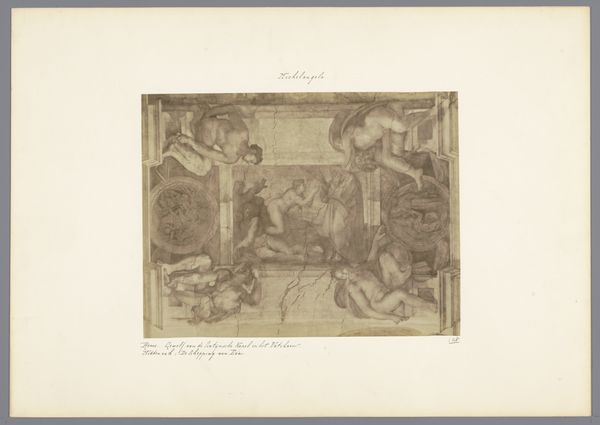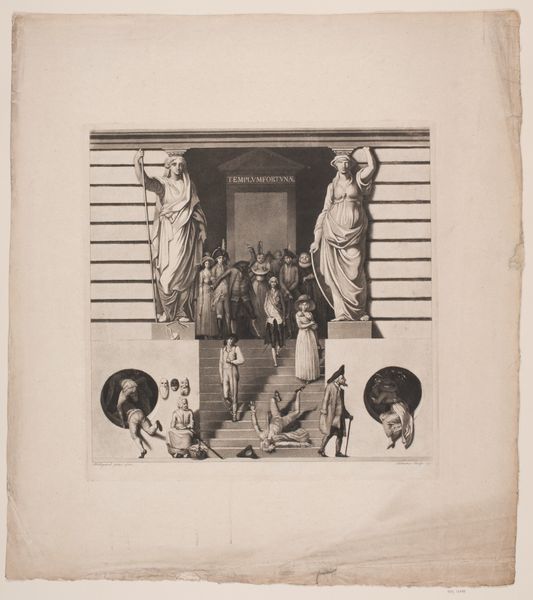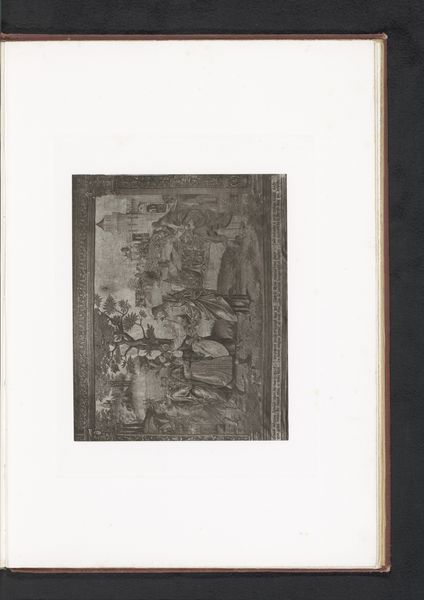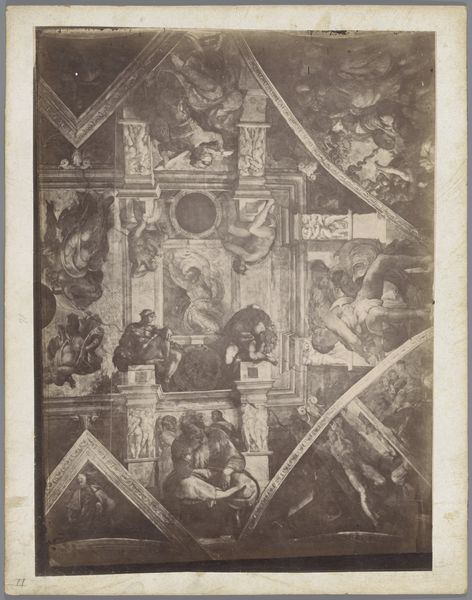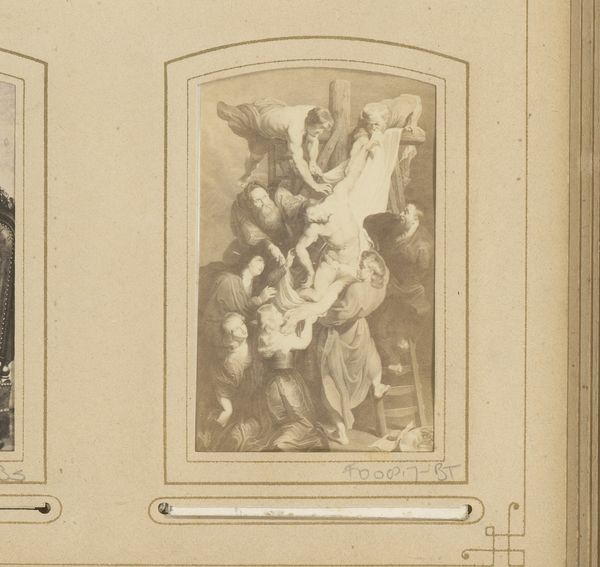
Fresco in de Sixtijnse Kapel te Vaticaanstad, voorstellende het scheiden van water en aarde before 1907
0:00
0:00
drawing, fresco, charcoal
#
drawing
#
figuration
#
fresco
#
11_renaissance
#
charcoal art
#
charcoal
#
history-painting
#
academic-art
#
italian-renaissance
Dimensions: height 196 mm, width 247 mm
Copyright: Rijks Museum: Open Domain
Curator: In this image, we’re looking at a photograph of a fresco, "The Separation of Land and Water," from the Sistine Chapel, painted by Michelangelo. This photo dates from before 1907 and was created by Edizione Brogi. Editor: The dramatic figures are so powerful. What strikes me, though, is that it is not the fresco itself, but a photograph of the fresco. How does the shift in medium from pigment on plaster to a photographic reproduction affect how we engage with Michelangelo's work? Curator: Excellent question. Consider the social context. Michelangelo was commissioned by the Vatican, the seat of power and religion, to create this. Now, the labor involved was intense. He spent years on scaffolding, painstakingly applying paint, while the Edizione Brogi studio uses photographic technologies to democratize and distribute the image. It becomes a commodity, doesn't it? Available to the masses. Editor: Yes, the shift in the mode of production dramatically changes its accessibility. Before photography, this would have been available only to people who were at the Chapel. Curator: Precisely. And how does this change in media impact how the image functions? Think about the materials. Fresco painting required specialized knowledge, specific pigments, and the laborious application of paint to wet plaster. Photography relies on capturing light, on mechanical reproduction. One requires intense physical labor and restricted viewership, the other, technological intervention. Editor: So, while Michelangelo used the human form to express divine power through skill and hard work, the photograph serves to broadly distribute, making the work available. What used to be spiritual art becomes consumer good. Curator: Exactly. And it changes our experience of it too. Now, how might the reduced scale and monochromatic reproduction impact our encounter with the image, as a purchased souvenir rather than something divine? Editor: The materiality, context, and mode of reproduction have completely reshaped my perspective on the image and its significance. It is so much more than a Renaissance masterpiece. Thanks.
Comments
No comments
Be the first to comment and join the conversation on the ultimate creative platform.
